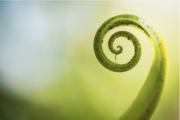Heuristic Research Tools
In my last article I wrote about the structure of heuristic research. Now I want to touch on some of the tools or ways of working that help in the six stages. Again, I am not expecting you to start writing a piece of research (unless you want to), but I imagine that some of the tools I outline, you will find useful in your own psychotherapeutic journey.
Identifying with the Focus of Inquiry
This is one of the tools used as part of immersion into the question. The aim being to “to get inside the question, become one with it, and thus achieve an understanding of it”. Moustakas gives an example of a researcher (Salk 1983) who learnt to “imagine myself in the position of the object in which I was interested in” to gather more information.
Self-Dialogue
This is a process often used in the first couple of phases of initial engagement and immersion with the aim of entering “into dialogue with the phenomenon, allowing the phenomenon to speak directly to one’s own experience”. He gives an example of the “rhythmic flow with it – back and forth, again and again – until one has uncovered its multiple meanings”.
Tacit Knowledge
This is a tool or process that that features in most of the stages “that allows one to sense the unity or wholeness of something from an understanding of the individual qualities or parts”. Moustakas provides an example of how we can recognise a face in a million, but “usually cannot tell how we recognise” it.
How do these tools relate to each other? We might say that at one end of a continuum is tacit or implicit knowledge, whilst at the other end is explicit knowledge. What bridges them is intuition.
Intuition
“Intuition makes immediate knowledge possible without the intervening steps of logic and reasoning”. This is often referred to as a ‘gut instinct’, we just know something. This skill is often used in initial engagement to intuit a question, in immersion to deepen the knowledge and in the last phase of creative synthesis. After all, “every act of achieving integration, unity or wholeness of anything requires intuition”.
Indwelling
This process “involves a willingness to gaze with unwavering attention and concentration into some facet of human experience in order to understand it constituent qualities and its wholeness”. Moustakas provides the example of anger, where “the process of indwelling requires that one remain with one’s anger and return to it again and again, until one is able to depict it fully in words and pictures, and perhaps even in creative expressions such as through poetry, artworks, movements and narratives”. Indwelling is often used in the explication phase.
Focusing
“The steps of focusing as used in heuristic research include the clearing of an inward space to enable one to tap into thoughts and feelings that are essential to clarifying a question; getting a handle on the question; elucidating its constituents; making contact with core themes; and explicating the themes”. Moustakas states that this process allows the researcher to pause, and in doing so allows unconscious information to become known. Focussing is often utilised in the explication phase.
The Internal Frame of Reference
“Heuristic processes relate back to the internal frame of reference” where knowledge is gained from “the person who has had, is having, or will have the experience”. In other words the research stems from something in our history that we understand and want to learn more about.
Moustakas noted that the research process can provide the researcher with a “growing self-awareness and self-knowledge”. This makes sense if we consider that “Rogers (1951) has emphasized that the empathic understanding of another person’s internal frame of reference is an essential condition of constructive personality change” (Moustakas).
Conclusion
I have briefly outlined the tools proposed by Moustakas as ways of sinking into the unconscious and bringing the material back up to consciousness to work with. There are themes that are similar to those proposed by Romanyshyn, with creating a space for the unknown, using creative writing/drawing, staying with the process, allowing time away from the process, and then a synthesis of what has been learnt.
Moustakas, C. (1990). Heuristic Research. Design Methodology, and Applications. Sage Publications Inc.
Rogers, C. R. (1951). Client-centered therapy. Houghton-Mifflin.
Romanyshyn, R. D. (2013) The Wounded Researcher. Research with Soul in Mind. Spring Journal Books.
Salk, J. (1983). Anatomy of reality. Columbia University Press.
